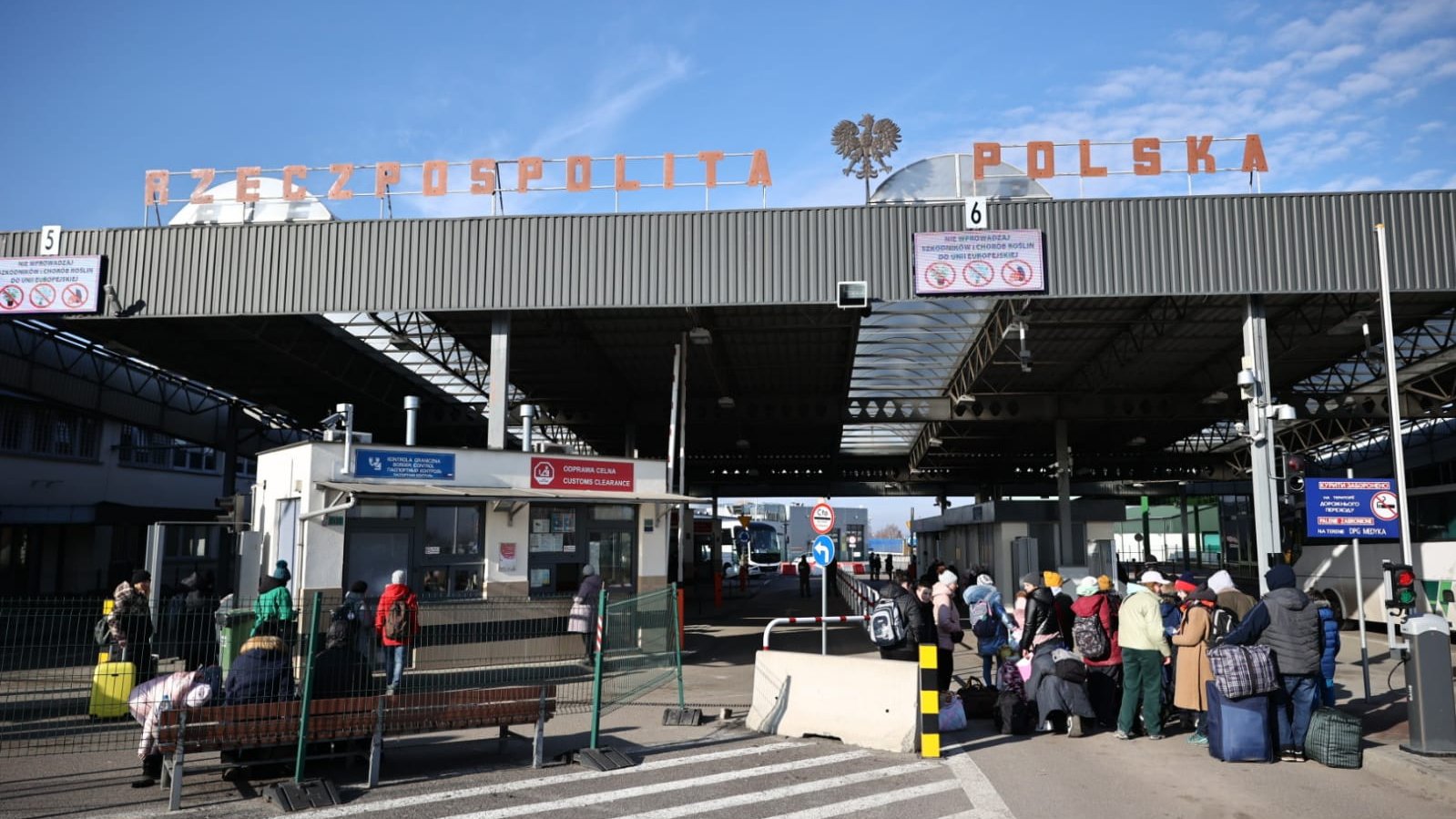 Video
Video
 Video
Video
Armed conflict in eastern Ukraine began in early 2014 following Russia’s annexation of Crimea.
On Feb. 24, 2022, Russian President Vladimir Putin announced the beginning of a full-scale land, sea and air invasion of Ukraine.
Throughout 2023, the war continued to have a devastating impact on civilians resulting in significant humanitarian needs. Thousands of civilians have been killed or injured, civilian infrastructure has been targeted, livelihoods have been disrupted and prolonged displacement is a reality for millions. At the tragic two-year milestone since the war’s start, life in Ukraine has been severely impacted in varied and complex ways.
In 2024, 14.6 million people need humanitarian assistance in Ukraine, about 40% of the population. Some 6.3 million people have fled the country and remain refugees, mostly across Europe.
The 2024 Ukraine Humanitarian Needs and Response Plan (HNRP) seeks $3.1 billion which will allow humanitarians to support 8.5 million people. Around 2.3 million refugees and host communities will be supported through the 2024 Ukraine Situation Regional Refugee Response Plan. These plans provide a shared understanding of the impact of the war and identify the most urgent humanitarian needs.
(Photo: Border crossing point in Medyka, Poland. Source: Polish Ministry of the Interior and Administration via Twitter)
Humanitarians began preparing for the onset of winter in Ukraine, around October. Temperatures in winter can drop below -4 degrees Fahrenheit (-20 degrees Celsius), putting millions of people already facing significant challenges in dangerous situations. People taking shelter in displacement centers or people in communities near the frontline, living in damaged homes or without access to heating, are particularly at risk.
Winter attacks by Russia on Ukraine’s infrastructure began in October 2023 and have been persistent. On Dec. 29, 2023, Russia launched more than 120 missiles, killing 30 civilians and leaving families cut off from water, heating and electricity. Such attacks are a direct violation of international humanitarian law, which prohibits any attacks that destroy critical resources and threaten civilian survival.
On March 16, 2023, the Independent International Commission of Inquiry on Ukraine said, “Russian authorities have committed a wide range of violations of international human rights law and international humanitarian law in various regions of Ukraine, many of which amount to war crimes.”
In a statement ahead of the war’s two-year mark, the UN Human Rights Office said, they have documented “a number of violations committed by Ukrainian military and security forces, albeit a fraction of the scope of those perpetrated by Russian forces.”
UN Human Rights Chief Volker Türk renewed his call on the Russian Federation to cease immediately its continuing armed attack on Ukraine, further to its obligations under international law and the UN Charter, and emphasized the urgency of achieving a just peace.
Some Ukrainian organizations struggle to secure much-needed financial support. Local humanitarian leaders and organizations know their community needs best and building trust with these organizations is key. CDP’s initial round of grants from its Ukraine Humanitarian Crisis Recovery Fund includes investments in Ukrainian organizations. CDP’s Localization issue insight describes the importance of locally-led humanitarian response and what philanthropy can do to improve their localization practices.
Latest Updates

What we’re watching: Weekly disaster update, January 22
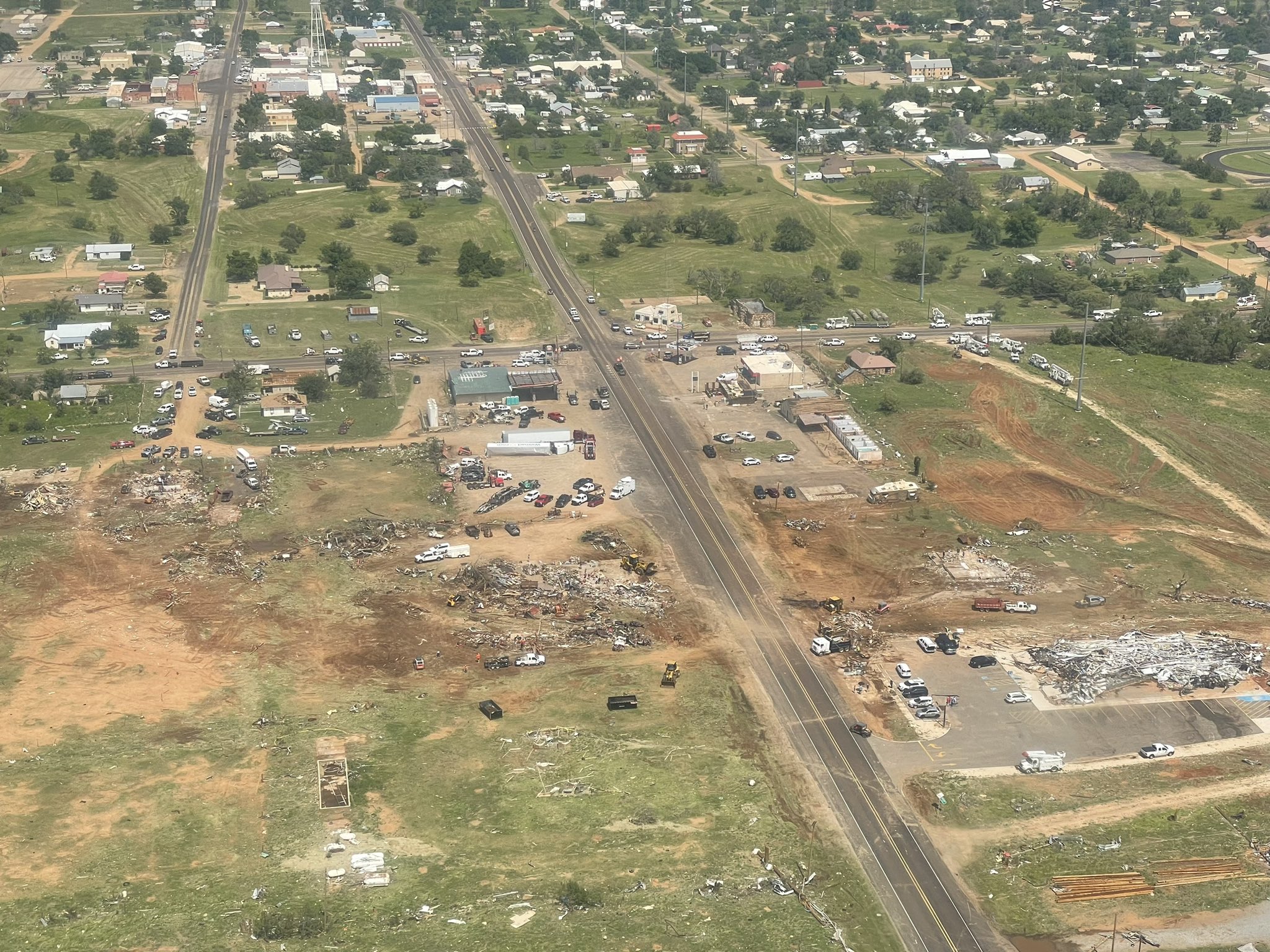
What we’re watching: Weekly disaster update, June 26
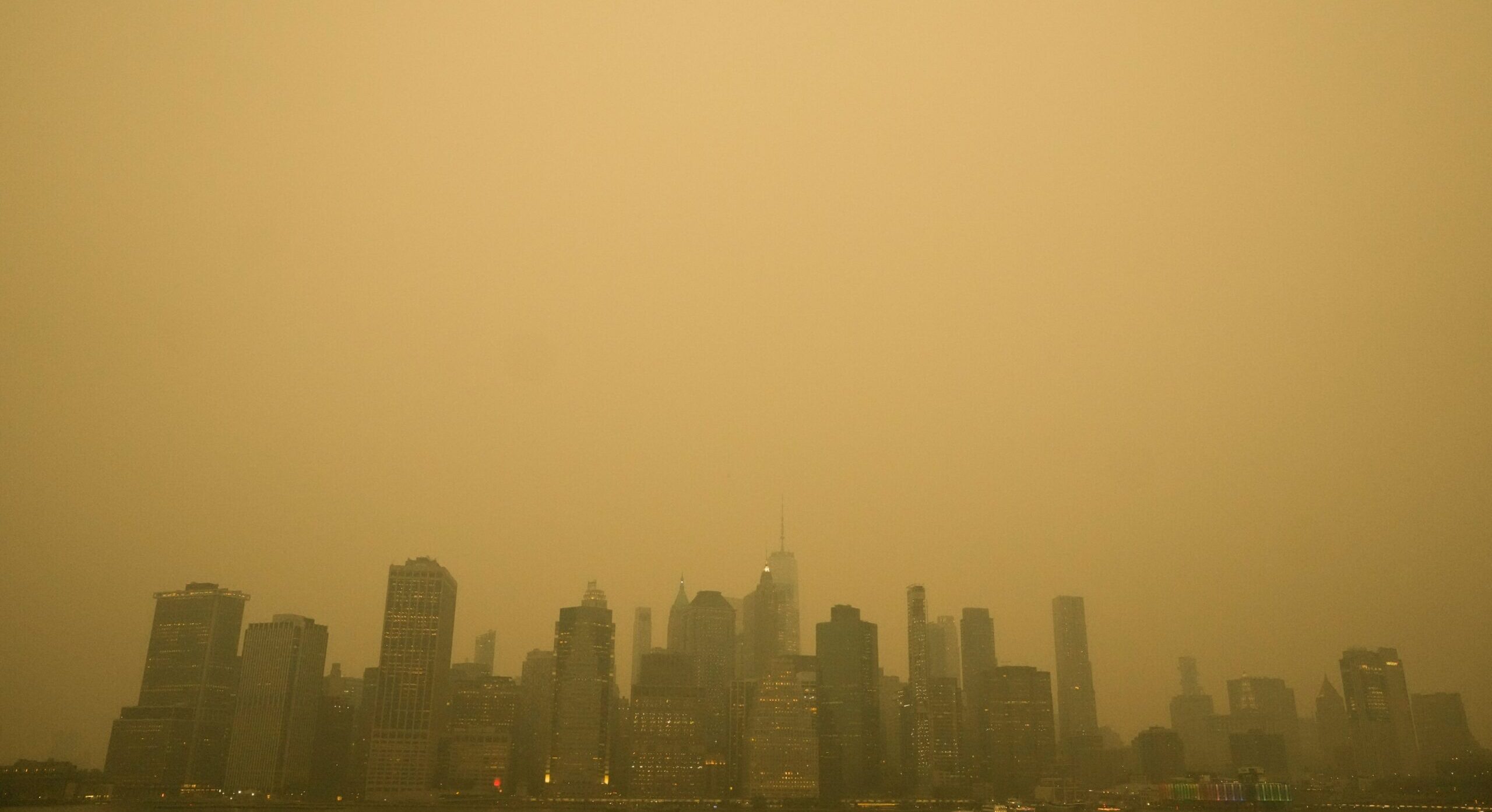
What we’re watching: Weekly disaster update, June 12
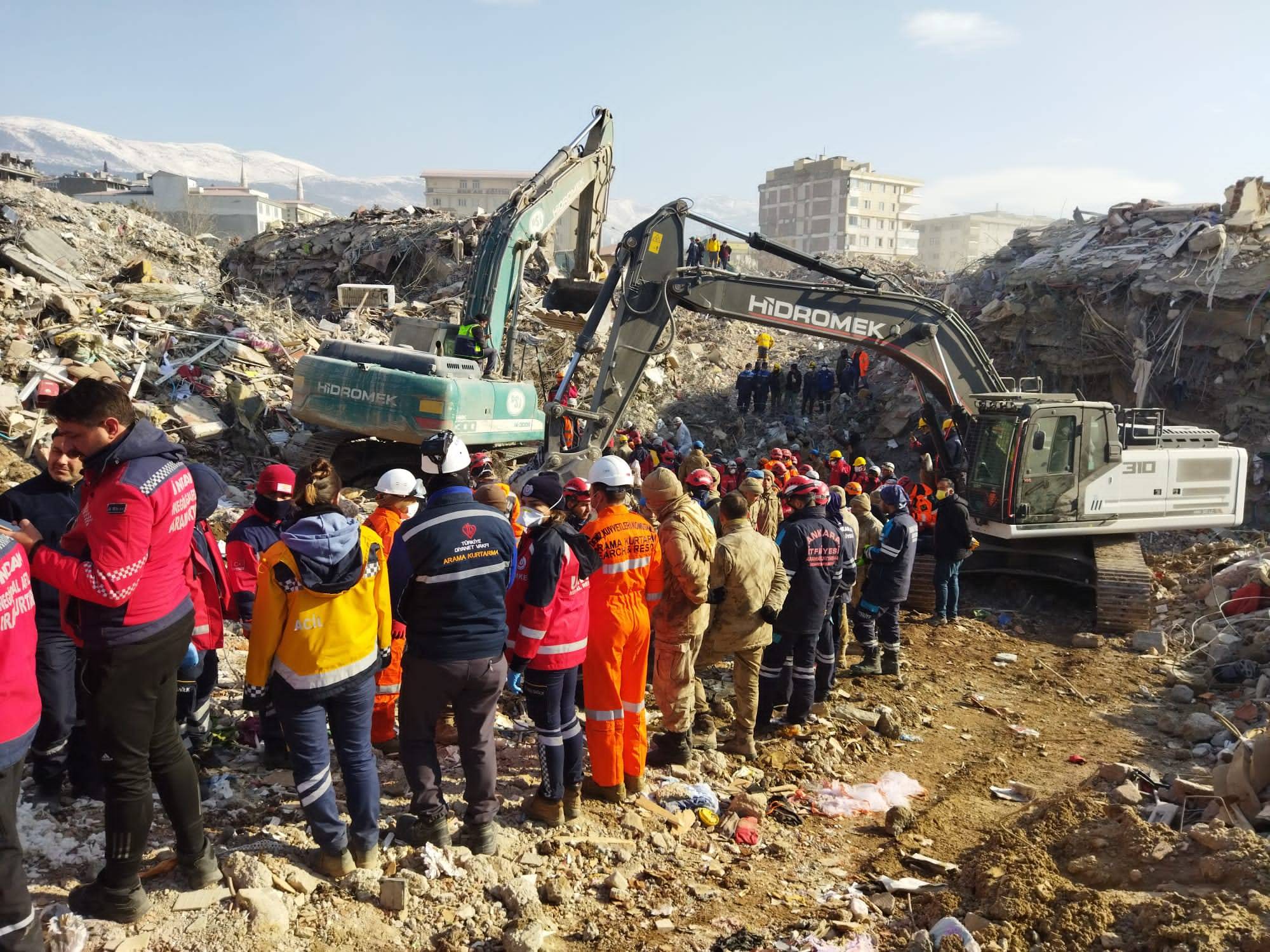
What we’re watching: Weekly disaster update, February 20
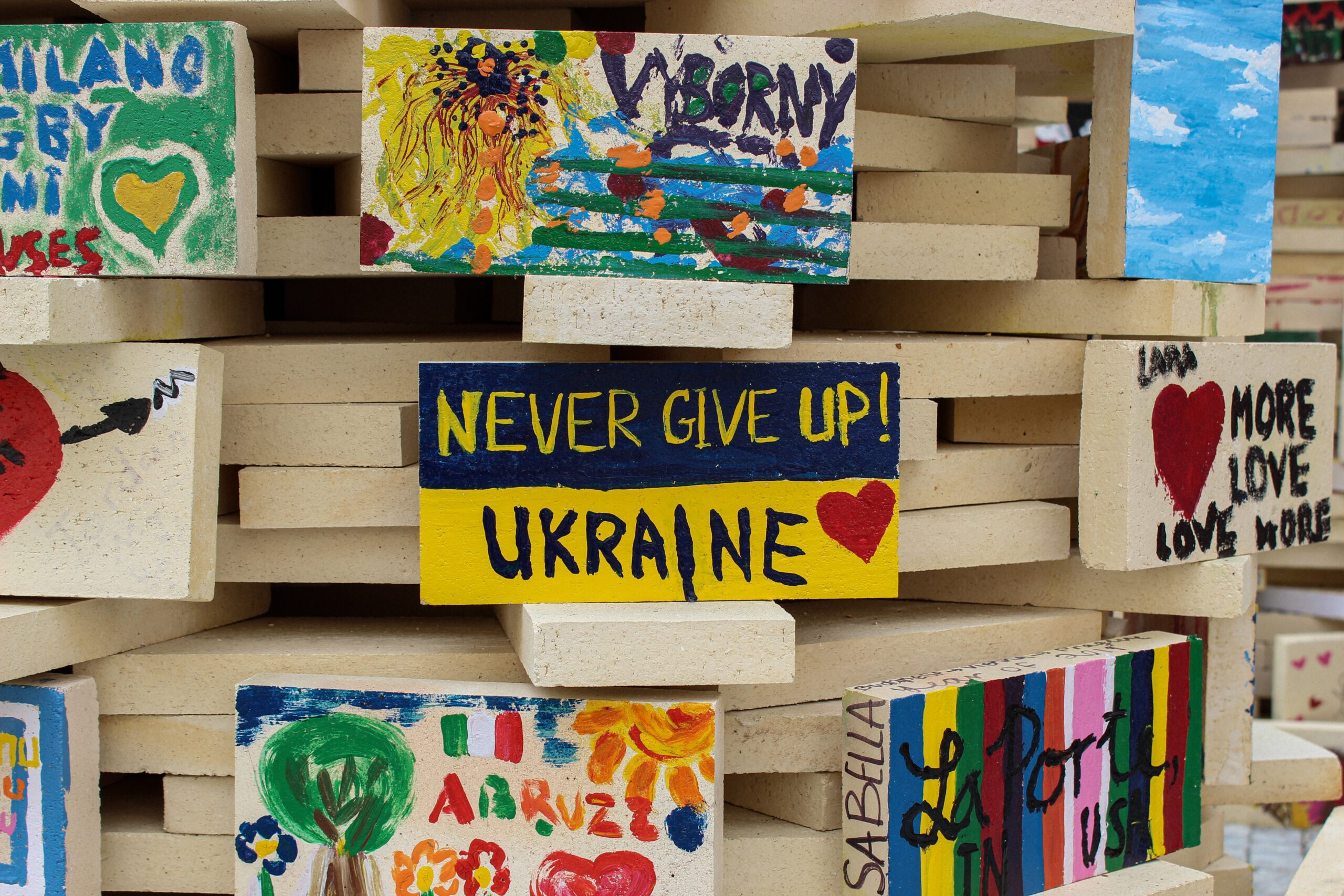
Announcing grants from the Ukraine Humanitarian Crisis Recovery Fund
Key facts
- In a report published Feb. 22, 2024, the UN Human Rights Monitoring Mission in Ukraine said it had verified 30,457 civilian casualties since Feb. 24, 2022, including 10,582 killed and 19,875 injured. The actual numbers are likely to be significantly higher.
- As of Feb. 15, 2024, more than 6 million refugees from Ukraine were recorded across Europe, according to the United Nations High Commissioner for Refugees (UNHCR).
- Through Sept. 25, 2023, there are an estimated 3.7 million IDPs in Ukraine. This figure represents a big decline compared to the 5.08 million as of June 13, 2023. Since August 2022, the number of IDPs has been on a downward trend.
- Between Feb. 24, 2022, and Feb. 22, 2024, the World Health Organization (WHO) verified 1,587 attacks on health care in Ukraine, resulting in 118 deaths and 253 injuries.
- According to Ukrainian authorities, in February 2023, the areas contaminated with mines and explosives had increased tenfold since the start of the war, with an estimated 30% of the country’s territory contaminated by mines.
- Humanitarian partners reached nearly six million people with multipurpose cash assistance (MPCA) in 2022. More than $1.2 billion was provided to people impacted by the war in Ukraine. It was the fastest and largest cash programming scale-up in humanitarian history.
- The Rapid Damage and Needs Assessment released on March 23, 2023 by Ukraine’s government, the World Bank Group, the European Commission and the UN estimates that the cost of reconstruction and recovery in Ukraine had grown to $411 billion, 2.6 times the country’s estimated 2022 GDP.
Kakhovka dam technological disaster
Complex humanitarian emergencies, such as Ukraine, are characterized by a variety of factors that contribute to human suffering. Factors include war or conflict, under-development, poverty, overpopulation, human-caused environmental destruction, and climate change and disaster events.
Attacks on critical infrastructure put communities in despair, hamper recovery and destroy lives. An extreme example of this is the collapse of the Kakhovka dam. Ukrainian and Russian authorities blamed each other for the collapse, which sent residents fleeing, prompted rescues, and damaged thousands of homes and civilian infrastructure. The destruction of the dam was being referred to by some as the largest technological disaster in Europe in decades.
According to experts, a deliberate explosion inside the dam most likely caused the massive structure to crumble. The dam has been under Russian control since early in the war. Officials said about 22,000 people live in areas at risk of flooding in Russian-controlled areas on the eastern side of the Dnieper River, while 16,000 live in the most critical zone in Ukrainian-held territory on the river’s western side.
As of June 7, about 80 towns in the Khersonska oblast had reportedly been flooded, causing damages and destruction to homes and other infrastructure. According to UNOCHA on July 7, 2023, “Access to water will remain the key humanitarian need in locations upstream from the dam where nearly 1 million people live in towns and villages estimated to be severely or catastrophically impacted by the sudden loss of water supply.”
On July 25, Save the Children issued a statement warning of the impact of the dam collapse on children and the availability of drinking water.
Amnesty International said the dam destruction requires an urgent international response. Marie Struthers, Regional Director, Eastern Europe and Central Asia, said in part, “The rules of international humanitarian law specifically protect dams, due to the dangers their destruction poses to civilians. The destruction of the Kakhovka dam is a catastrophe that endangers the life, safety and well-being of tens if not hundreds of thousands of people living within range of the flood waters.”
The agricultural sector in southeast Ukraine is expected to be particularly affected in the long term because of flooded fields and the region’s dependence on irrigation. Farmland that is no longer irrigated and cultivated may dry up, becoming more vulnerable to soil erosion and dust storms.
The Food and Agriculture Organization of the UN said on July 26, 2023, “Flooding after the breach of the Kakhovka Dam on 6 June 2023 resulted in relatively limited losses on agricultural production but long-term consequences for irrigation remain, including for maize and other irrigated crops planted in spring 2023.”
According to the humanitarian organization Mercy Corps, priorities for the agricultural sector in the aftermath of the dam’s destruction include demining and removal of unexploded ordinances, rehabilitation of irrigation systems and wells, access to financing, and provision of agricultural equipment.
One hundred days after the disaster, Norwegian Refugee Council said on Sept. 13, 2023, affected people struggled to rebuild their lives. While there has been some progress on the recovery, “the rehabilitation of pipelines is a complex operation particularly in areas close to active hostilities. This means civilians living in villages could end up facing winter without water and warmth.”
Safe passage and access to aid
The war has impacted people’s access to health care, education and other basic services. People living outside collective sites, particularly in rural areas, face problems accessing services and assistance.
For those that are not displaced and remain home in war-affected areas, mainly older people, people with disabilities or with chronic disease, there is limited access to services and aid while also facing high severity of insecurity.
In their Ukraine humanitarian response and funding snapshot released on Oct. 27, 2023, UNOCHA said, “Despite continuous efforts by partners to increase humanitarian support, some specific activities, particularly related to the provision of essential services in areas close to the front line have been limited by insecurity and access challenges. The delivery of aid to communities along the front line, however, has steadily increased throughout the year.”
Refugees and internally displaced peoples
The war in Ukraine has been the fastest growing and largest displacement crisis in Europe since World War II. The 2024 Ukraine Situation Regional Refugee Response Plan (RRP) requested $1.1 billion to support 2.2 million refugees across 11 host countries.
The RRP states, “Barring unforeseen circumstances, newly displaced refugee movements into neighbouring countries and beyond are expected to significantly decrease as compared to the first years of the response.”
From Feb. 24, 2022 to Feb. 14, 2024, there were more than 28.69 million border crossings from Ukraine to countries featured in the RRP, according to UNHCR. As of Feb. 15, 2024, 6,004,100 refugees from Ukraine were recorded across Europe, a significant decline from mid-May 2023 when more than 8.24 million refugees were recorded in the continent.
On March 4, 2022, “European Union (EU) Member States activated the Temporary Protection Directive (TPD) for the first time. The TPD stipulates that all Member States must grant temporary protection (TP) to Ukrainians and persons with protection status in Ukraine and their family members residing in Ukraine before 24 February.”
Through Feb. 14, 2024, 2,974,510 Ukrainian refugees were registered for Temporary Protection or similar national schemes in neighboring countries. The TPD is the first time the bloc has invoked such an emergency power. Observers have noted that the reception for Ukrainians in the EU is in stark contrast to how the continent has viewed asylum seekers from other parts of the world.
On March 2, 2023, humanitarian organizations providing assistance inside Ukraine, to refugees who have fled the country and to host communities, applauded the activation of the TPD in March 2023. Yet, they said, “ensuring all refugees from Ukraine enjoy the rights provided by the TPD has not been without challenges.” The organizations called on the EU and Member States to redouble efforts to ensure its effective, uniform and inclusive implementation.
According to IOM’s General Population Survey (Round 14), an estimated 3,674,000 people have been internally displaced within the country. Of the total, 52% of all IDPs are concentrated in just five oblasts in Ukraine, “with the largest estimated de-facto IDP presence in Dnipropetrovska and Kharkivska Oblasts (498,000 and 494,000 estimated IDPs, respectively).”
An estimated 70% of displaced households reported to IOM having been displaced for at least one year. According to IOM, “As IDPs remain in displacement for longer periods of time, they may face compounded vulnerabilities borne out by the protracted nature of their displacement.”
As early as April 2022, IOM began observing significant movements of displaced people back to their place of residence. IOM defines return as “the act or process of going back or being taken back to the point of departure.”
There were nearly 80,000 foreign students in Ukraine at the beginning of the conflict. Many are Indian or African (mostly from Morocco, Egypt and Nigeria) and both groups reported stories of racism and discrimination at the border in trying to leave the country when the war began.
UNHCR carried out interviews between January 2024 and February 2024 with close to 4,000 refugee households across Europe, 4,800 IDP households in Ukraine and close to 1,100 refugee returnee households in Ukraine. The analysis revealed the proportion of refugees planning or hoping to return to Ukraine in the future has decreased compared to one year ago (from 77% to 65%), while the share of those who are undecided about returning has increased (from 18% to 24%). As displacement continues, uncertainty grows.
The Biden administration announced in April 2022 that the U.S. would accept 100,000 Ukrainians through an online portal named Uniting for Ukraine. Under this program, more than 178,000 Ukrainians have arrived in the U.S. as of February 2024. Additionally, more than 319,000 Ukrainians have been processed into the U.S. outside of the program since March 24, 2022. Whichever scenario refugees find themselves in, there is a lot of uncertainty, and as of February 2024, no clear permanent pathways to legalization exist for Ukrainians.
According to an Associated Press-NORC Center for Public Affairs Research poll in April 2022, 65% of Americans favored accepting Ukrainian refugees into the U.S., while 15% oppose it. More than 40 major companies in the U.S., including Hilton, Amazon, Pfizer and Pepsico, pledged in September 2022 to hire nearly 23,000 refugees over the next three years. However, their promises do not match the increase in new arrivals.
Marginalized and at-risk populations
Ukraine has more than 130 ethnic groups, many of whom speak other languages. Groups with heightened vulnerabilities include the Roma community, the elderly, people with disabilities, women in rural communities in displacement and conflict zones, and LGBTQIA+ communities.
The 2024 HNRP says the prolonged effects of the war will continue to exacerbate the fragile humanitarian conditions of vulnerable people. The HNRP also states, “Increased hostilities could further deepen the already prominent and severe protection crisis impacting the most vulnerable groups, including children, further aggravated by limited levels of humanitarian access in front-line areas.”
Many homes that care for older Ukrainians and those with disabilities in eastern Ukraine have evacuated their residents to Dnipro, and many residents are traumatized. Older adults have faced increased challenges in accessing services and forced separation and isolation. The harsh winter weather and lack of power and electricity caused by Russian attacks against Ukraine’s energy infrastructure creates particular challenges for older people because of existing health problems, limited mobility and little income.
According to a report by Amnesty International released on Dec. 1, 2023, “Russia’s full-scale invasion, which began in February 2022, has placed unprecedented strain on Ukraine’s already overburdened care system. As a result, many older people, including older people with disabilities, have been separated from their families, leading to their segregation and isolation.”
According to IOM’s General Population Survey (Round 14), 29% of IDP households had one or more people living with a disability and 49% included at least one older person. In Round 13, these figures were 30% and 44% respectively.
The war has destroyed or damaged thousands of schools. On Jan. 24, 2023, Save the Children said one school has been destroyed every other day in Ukraine since the start of the academic year in September 2022. The ongoing attacks mean Ukrainian schools cannot have onsite classes without a functional bomb shelter.
Multiple forms of gender-based violence (GBV) have been reported, with high risk for women and girls fleeing, at border crossing points, transit centers and bomb shelters. A report from HIAS and VOICE released in May 2022 discusses a range of GBV risks, including an increase in domestic violence and an extreme lack of safe and sustainable housing and shelter options. Civil society organizations have responded to meet immediate needs but face many challenges in attempting to provide support to large numbers of internally displaced people.
According to a GBV Task Force formed by members of the GBV sub-cluster and the Cash Working Group, the Cash and Voucher Assistance (CVA) scheme registration is mainly done online, which is a barrier to people without access to the internet, including older women. Additionally, women from some ethnic minority groups, such as Roma, may have more difficulties registering for CVA due to a lack of documentation.
People that identify as LGBTQIA+ people in Ukraine often cannot reveal their sexual orientation or gender identity, fearing violence, rejection and discrimination if they do. People’s identities are complex and intersect in ways that can exacerbate inequitable outcomes. Discrimination and other difficulties often add barriers to accessing humanitarian assistance and services. Transgender persons whose gender identity does not match their official identity documents face significant barriers. Dozens of LBGTQIA+ Ukrainians have reported being turned away at official Ukrainian border crossings and experienced mistreatment by authorities.
Related reading
Impact story
Economic and food security impacts
The war has devastated Ukraine’s economy, with hostilities and displacement driving loss of livelihoods and income.
The 2024 HNRP says, “The agri-food sector — a key pillar of Ukraine’s economy — is contracting rapidly, with severe consequences for broader food and nutrition security and profound shocks on rural households that rely exclusively on agriculture for their livelihoods.”
Russia’s invasion of Ukraine has had multiple negative economic impacts on Ukraine. According to ACAPS, the country’s gross domestic product (GDP) “decreased by 30% in 2022. Exports and tax income have decreased at a time when increased defence spending is drastically increasing government spending. The devaluation of the Ukrainian hryvnia and increase in inflation are driving up prices.”
These negative economic impacts contribute to a wide range of humanitarian consequences and needs and demonstrate the importance of humanitarian aid that provides cash assistance and livelihood support.
Ukraine’s agricultural sector is a crucial source of livelihood for Ukrainians, especially those living in rural areas. Prior to Russia’s invasion of Ukraine, the agricultural sector accounts for 11% of the country’s gross domestic product and almost 40% of total exports.
Sunflower may be the most important crop to the Ukrainian economy, considering the size of agricultural holdings, the value of its products and the number of jobs it creates. From Feb. 24 to Oct. 4, 2022, REACH recorded 72 cases of damage or destruction of agricultural machinery. The impact of Russia’s invasion of Ukraine on the country’s sunflower oil processing supply chain has been significant.
The destruction of the Kakhovka dam not only has an immediate impact on access to food for thousands of people but will likely impact long-term food production and food security. Thousands of acres of agricultural land have been flooded and may cause the loss of recently planted crops.
Susanne Wengle, a U.S. political scientist, and Vitalii Dankevych, a Ukrainian economist, wrote in July 2023, “Agricultural production could be reduced for years to come, with impacts that ripple through supply chains and affect food security around the world.”
Reinforcing these messages in their Multisectoral Needs Assessment released on April 25, 2023, REACH and WFP said: “In accessible areas, the data suggests that the main driver of food security is economic access. Analysis of consumption expenditures illustrated that a majority of HHs [households] lack economic capacity to meet essential needs and many HHs deploy expenditure-related strategies such as using their savings, cutting essential expenditures or taking on extra work to cope with a lack of resources.”
The conflict is likely to exacerbate world hunger, particularly in countries already facing famine or high levels of malnutrition and food shortages. It will also increase the costs of many products globally. Ukraine exported a number of products that will significantly impact the global food supply chain. Ukraine and Russia export 28% of the world’s wheat and 15% of its corn.

Russia’s invasion of Ukraine, combined with lingering pandemic effects and an increase in climate-related events, will have far-reaching consequences globally. The war in Ukraine has sent food prices soaring, exacerbating the hunger crisis in the Horn of Africa. The WFP has urged for a “political solution” as the closure of Ukrainian ports in the Black Sea threatens food supplies globally.
An agreement in July 2022 with the UN and Turkey aimed to facilitate shipments of Ukrainian grain through the Black Sea, with the deal aiming to ease the global food shortage. On Aug. 3, 2022, the first shipment of Ukrainian food under the deal was cleared to proceed from Istanbul to its destination in Lebanon.
On March 17, 2023, Under-Secretary-General for Humanitarian Affairs and Emergency Relief Coordinator, Martin Griffiths, told the UN Security Council, “Under the Black Sea Grain Initiative, close to 25 million metric tons of foodstuffs have been safely exported from Ukraine since August. WFP has been able to transport more than half a million metric tons of wheat to support humanitarian operations in Afghanistan, Ethiopia, Kenya, Somalia and Yemen.”
On July 17, 2023, Russia abandoned the Black Sea Grain Initiative. The UN Secretary-General Antonio Guterres told the UN Food Systems Summit on July 24, “With the termination of the Black Sea Initiative, the most vulnerable will pay the highest price.” Turkish President Recep Tayyip Erdogan was reportedly set to visit Russia’s Vladimir Putin to discuss resuming the Black Sea Grain Initiative in August 2023.
Sergei Lavrov, Russia’s Foreign Minister, said on Sept. 23, 2023, the latest UN proposals to restart the export corridor for Ukrainian agricultural products were “simply not realistic.” According to the Famine Early Warning System Network on Nov. 6, 2023, “Exports of Ukrainian grain via its Black Sea ports have declined since the expiration of the Black Sea Grain Initiative (BSGI) in mid-July 2023, though not to the extent that many anticipated.”
While in New York to speak at the UN General Assembly in September 2023, Ukraine’s President Zelensky met Kenya’s President William Ruto and South Africa’s Cyril Ramaphosa. President Zelensky’s office announced it will set up “grain hubs” in Kenya and other parts of Africa to tackle food insecurity but was short on details.
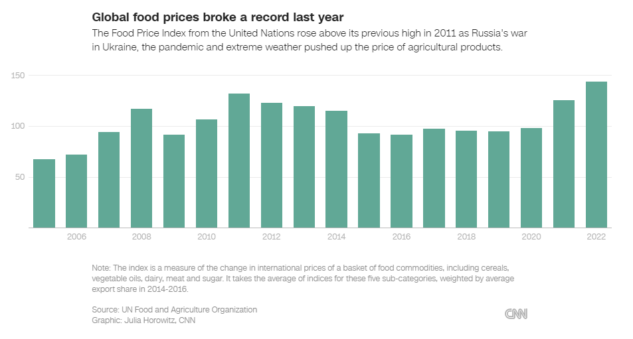
Women and girls
During all disasters, there are unique needs faced by women and girls, and these are exacerbated in a conflict crisis. In 2024, 8.1 million of the 14.6 million people in need are women and 1.5 million are girls.
According to UN Women, the war takes a bigger toll on women and girls, who disproportionally carry its burden. Fifty-six percent of the approximately 4 million internally displaced people are women. Marking two years since the war began, UN Women said, “women in Ukraine face increased challenges in accessing security, justice, social services, mental, sexual and reproductive health services, employment, and other essential services.”
Generally, displaced persons are at increased risk of trafficking, and conflict often introduces new risks of trafficking and/or exacerbates pre-existing risks. The right combination of factors that increase the risk of trafficking are present in Ukraine, which led to the creation of an Anti-Trafficking Task Force in May 2022. However, while many risk factors for trafficking are present in the Ukraine conflict, there does not appear to be a surge in cases of trafficking yet.
In an article that first appeared in the September 2023 issue of Forced Migration, IOM’s Heather Komenda described how the lack of state collapse in Ukraine “is almost certainly having a profoundly preventative impact.” Other preventative factors include that safe access to territory was given to most (though not all) people fleeing Ukraine. It is possible that trafficking cases may be unreported or undetected, an obstacle faced around the world.
Women continue to face vulnerabilities and risks of trafficking, including large numbers traveling alone and the need to provide for themselves and their families which may mean accepting work in risky conditions. Komenda concluded the article by saying the response to the crisis has almost certainly reduced vulnerability to trafficking, but it is unlikely to have completely eliminated the risk.
There have been numerous reports of rape and other forms of gender-based violence (GBV). According to GBV Sub-Cluster estimates, “3.6 million including IDPs, returnees to war-affected regions, and those remaining in areas under occupation or ongoing military hostilities require immediate and sustained support to access GBV prevention and response services.”
On May 3, 2022, the UN and the government of Ukraine signed a framework to assist survivors of sexual violence. On June 20, the Ukrainian government announced having ratified the Council of Europe’s “Convention on Preventing and Combating Violence Against Women and Domestic Violence,” also known as the Istanbul Convention.
The convention establishes legally binding standards for governments to prevent violence against all women and girls, support survivors, and hold abusers to account. The move was welcomed by rights groups, including Human Rights Watch.
CARE produced a rapid gender analysis (RGA) brief on the Ukraine crisis that highlights significant gender issues – both pre-existing issues and ones that have emerged as a result of the conflict – so that humanitarian responses can better meet people’s different needs as the crisis evolves.
CARE’s RGA states, “As the humanitarian crisis ensues, a general trend has emerged: women are often providing alone for their families while facing loss of income, family separation, and massive disruptions in the provision of essential services; whilst many men are engaged in the more direct war efforts on the frontlines, exposing themselves to potential death, severe injuries and mental health distress.”
Cash assistance
As with most disasters and emergencies, cash donations are recommended by disaster experts as they allow for on-the-ground agencies to direct funds to the most significant area of need, support economic recovery and ensure donation management does not detract from disaster recovery needs.
CDP recommends cash both as a donation method and a recovery strategy. Providing direct cash assistance can allow families to purchase items and services that address their multiple needs. It gives each family flexibility and choice, ensuring that support is relevant and timely. Cash assistance can also help move families toward rebuilding their lives and has become a primary way for humanitarian organizations to distribute assistance quickly to affected people.
Humanitarian partners reached nearly six million people with MPCA in 2022 (see image below). More than $1.2 billion was provided to people impacted by the war in Ukraine. It was the fastest and largest cash programming scale-up in humanitarian history. “Cash assistance was vital to make sure humanitarians could help people in Ukraine to address their diverse needs while upholding their dignity and preferences, and supporting the local economy.”

According to the 2024 HNRP, “MPC shall remain in 2024 the preferred response approach unless contextual circumstances preclude it. MPC offers people flexibility and dignity in covering their basic needs, while playing a key role in protecting livelihoods and supporting the local economy.”
Cash assistance is also a critical tool for helping communities that host Ukrainians fleeing the war and for addressing individual and household protection needs. According to the Protection Cluster, “Cash for protection can be both a responsive and remedial action, meaning that it is aimed at preventing, reducing, or mitigating exposure to protection risks, or limiting the impact of risk on victims.” As of March 2023, there were dozens of humanitarian organizations with active MPCA programs.
According to the WFP, households predominantly rely on cash to purchase food. In their General Population Survey (Round 14), IOM reported that similar to previous rounds, “cash remains the most pressing need reported by all population groups (50% for IDPs, 45% for returnees and 44% for non-IDPs).”

Christian Blind Mission has developed a technical brief providing guidance for Ukrainian humanitarian agencies on implementing disability-inclusive cash and voucher assistance (CVA). The brief recommends ensuring CVA reaches all persons with disabilities, linking CVA to social protection schemes and supporting people with disabilities in institutions. A GBV task force comprised of members of the GBV Sub-Cluster and the CWG has produced a GBV risk analysis of CVA specifically for the Ukraine context.
Additionally, UNCHR Ukraine published recommendations on cash for protection when cash is used to address individual and/or household-level protection needs.
Another solution-oriented resource is the Safe Cash Toolkit, produced by USAID and the International Rescue Committee in 2019, that is ”designed to capture the minimum amount of information to ensure that organizations can make informed decisions on how to design, implement and adjust Cash and Voucher Assistance (CVA) programs at a field level to prevent and minimize harm.”
Food security and livelihoods
According to the 2024 HNRP, the food security and livelihoods cluster will target 3.4 million people including 472,000 IDPs.
The cluster will “address lifesaving priorities and strengthen the self-reliance of vulnerable, war-affected households and communities through two complementary cluster objectives applying a combination of in-kind and market based responses (cash and voucher).”
Agriculture provides employment for about 14% of Ukraine’s population and families who have lost assets due to the conflict need support to rebuild their livelihoods. For example, Save the Children distributed livestock to rural families to ensure they can provide for themselves.
There is concern about older adults inside Ukraine considering their specific vulnerabilities and food requirements. Older adults may choose or be compelled to shelter in place. During the harsh winter, food may be in short supply and rising prices affect older adults.
Health care including mental health and psychosocial support
According to a World Health Organization report released in March 2023 on the health needs and access to health services among the adult population in Ukraine, “the country’s health system remains resilient and that overall access to health services remains fairly high. However, results also show that more than half of those who sought various types of health care faced at least one problem, with the main barriers being the cost of medicines and treatment, and challenges relating to time and transport.” Removing barriers to access is an ongoing need.
According to a report released by the Ukrainian Healthcare Centre (UHC), 80% of the healthcare infrastructure in Mariupol was destroyed as Russian forces occupied the city. UHC found that four out of five general hospitals were destroyed, five out of six maternity facilities and no mental health care was available. The lack of healthcare provision increases the threat of disease and sickness. The WHO has said attacks on healthcare facilities are a breach of international humanitarian law and the rules of war.
According to ACAPS in a September 2023 report about impact of the conflict on the healthcare system and specific needs: “The healthcare system in Ukraine remains functional but is highly overstretched. Increased prices of medicines and poverty have become major barriers to healthcare access in the country. Decreased budget spending on healthcare has also caused gaps in the funding and provision of health services.” The report says people with chronic conditions struggle to access treatment and receive medication. Additionally, there are reports of healthcare staff shortages, especially in clinical psychology and physiotherapy.
The psychological consequences of the war in Ukraine can seem invisible, but that does not mean they aren’t there. As the war continues, mental health providers have seen worsening psychological symptoms. A report released in February 2024 by the IFRC Psychosocial Centre said psychological assistance requests are on the rise, particularly from women heading households and caring for vulnerable family members.
Critical work is ongoing to strengthen the emergency response system and build up primary and community mental health care provision. On Dec. 16, 2022, the WHO shared best practices they are learning from Ukraine regarding scaling up mental health and psychosocial services in war-affected regions.
In collaboration with The KonTerra Group, the Cornerstone OnDemand Foundation has developed a series of free videos on mental health topics to support refugees, internally displaced people, host families and at-risk communities in Ukraine and neighboring countries. The videos are available for free on DisasterReady’s YouTube channel in English, Polish, Russian, and Ukrainian.
Protection
In 2024, protection activities, as outlined in the HNRP, will focus on ensuring vulnerable people are provided with gender and age-responsive protection assistance to address risks to their safety and wellbeing, and enabling equitable access to basic services and legal and human rights for vulnerable people.
The Protection Cluster and UNHCR published a report in May 2022 entitled, “Protection of LGBTIQ+ People in the Context of the Response in Ukraine,” focusing on the war’s impacts on LGBTIQ+ people. The report recommends that humanitarian actors and service providers understand and address risks through tailored programs.
Among newly displaced people, a high percentage of older people and people with disabilities are in need of social and health care support, including accommodation in specialized institutions. The UNICEF Executive Director Catherine Russell said, “Ukraine’s children urgently need safety, stability, access to safe learning, child protection services, and psychosocial support.”
A report from Amnesty International released on Dec. 6, 2022, revealed that many older adults are unable to access housing in displacement. The organization recommended that “International organizations should do more to financially support older people so that they can afford to rent homes and, working together with the Ukrainian authorities, include them among those prioritized for placement in any newly-built accommodation.”
The collapse of the Kakhovka dam in June 2023 and the subsequent flooding disaster revealed the importance of considering the needs of specific populations before and after disasters. The Ukrainian Red Cross Society supported the evacuation of at least 66 people with limited mobility due to the Kakhovka dam disaster.
Explosive ordnance remains a growing protection concern across the country. Currently, limited humanitarian space exists for mine action activities beyond educational messages, training of NGOs on risks and monitoring of accidents. However, the retreat of Russian forces around Kyiv and to the north and northeast has opened the possibility of an explosive ordnance clearing operation.
Refugees and IDPs are particularly vulnerable to human trafficking. Economic need is one of the most often identified vulnerability factors for trafficking in persons.
Shelter
In 2024, 7.9 people need shelter and non-food item assistance. This figure is a decrease in the estimated number of people needing assistance by 400,000 compared to the previous year.
With around 1.4 million residential properties damaged, the shelter and non-food item needs in Ukraine are significant. The damages from the June 6, 2023, destruction of the Kakhovka dam and subsequent flooding are not included on that figure. That single disaster alone damaged around 37,000 homes.
In 2024, humanitarians will focus on providing emergency shelter, supporting families during the winter months through items to ensure warmth such as appliances and bedding, and ensuring adequate housing standards and longer-term activities like repairs.
According to IOM’s General Population Survey (Round 14), “IDPs in the South and East macro-regions were less likely to consider their homes adequate for the winter. Oblasts where IDPs were most likely to report their homes as unprepared are Khersonska (25%), Chernihivska (18%) and Odeska (18%). Significant shares of IDPs (38%) and non-displaced persons (48%) considering relocation indicated that the upcoming winter was a significant factor in their wish to leave.”
The Global Shelter Cluster Environment Community of Practice has produced a document summarizing environment considerations. The Ukraine Shelter and Non-Food Item Cluster tracks progress and supports coordination across humanitarian partners.
Water, sanitation and hygiene (WASH)
In 2024, 9.6 million people in Ukraine are estimated to need WASH related assistance. Before the war, water and wastewater infrastructure was affected by underinvestment and poor maintenance. The war has exacerbated the situation through direct attacks on such infrastructure and power outages.
According to the 2024 HNRP, “The cluster response will focus on supporting WASH related utilities and service providers impacted by the war to maintain basic service levels and reduce operating costs in settlements near the front line and those with significant influxes of internally displaced people and restore services in areas where the Government of Ukraine regains the control.”
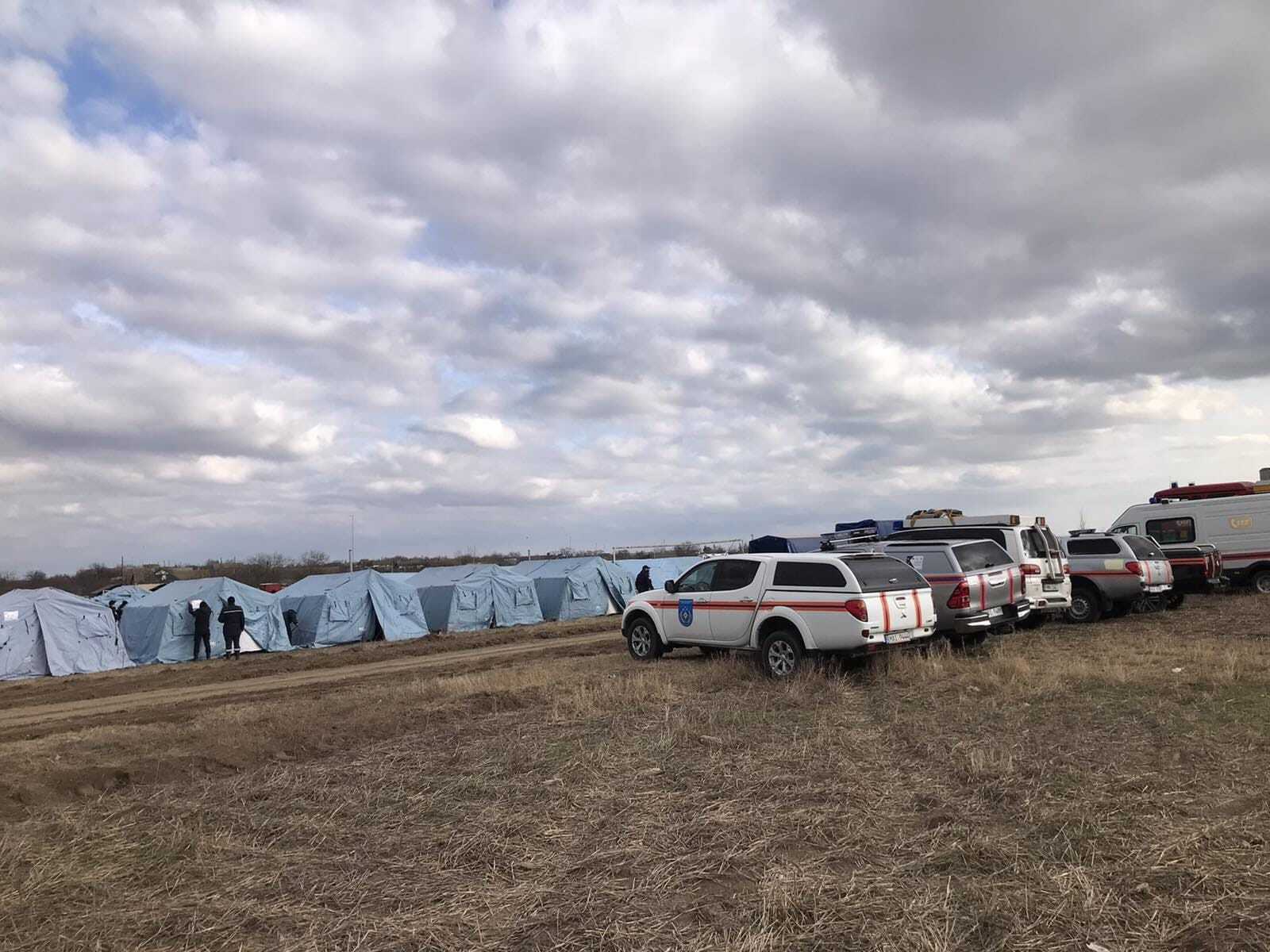
The CDP Ukraine Humanitarian Crisis Recovery Fund focuses on addressing humanitarian needs that arise, particularly among the most vulnerable, marginalized and at-risk internally-displaced peoples and refugees. CDP is also in contact with and can grant to Ukrainian and other international organizations that are not 501(c)3 entities.
Contact CDP
Philanthropic contributions
If you would like to make a donation to the CDP Ukraine Humanitarian Crisis Recovery Fund, need help with your disaster-giving strategy or want to share how you’re responding to this disaster, please contact development.
Recovery updates
If you are a responding NGO, please send updates on how you are working in this crisis to tanya.gulliver-garcia@disasterphilanthropy.org. Responding donors are also encouraged to contact Tanya to share how they are innovatively assisting people in Ukraine and receiving communities.
Philanthropic and government support
There has been a strong philanthropic response to the war in Ukraine. The Council on Foundations maintains a webpage summarizing philanthropy’s response. According to Candid, 5,304 donations and pledges worth more than $3.17 billion have been made in support of the Ukrainian people. Of these 5,304 are grants worth $1,964,746,463 and 195 are pledges worth $1,209,789,480. Learn more about how you can share your data with Candid.
CDP’s Ukraine Humanitarian Crisis Recovery Fund focuses on medium- and long-term recovery, ensuring access to basic services and strengthening the protection of those affected by the humanitarian crisis and COVID-19. The following are some of the grants awarded through this fund.
- $250,000 to Association of Roma Women in 2022 to ensure the long-term capacity, stability and organizational development of this Roma women-led organization, which provides humanitarian aid to the most vulnerable affected Roma populations in Ukraine and who works on the economic recovery of the Roma community.
- $250,000 to Charitable Foundation Rokada in 2022 to facilitate the integration of internally displaced persons (IDPs) through the creation of Councils of IDPs, which include representatives of local communities, IDPs and executive authorities. The Councils of IDPs are advisory bodies and are involved in the decision-making and resolution of problematic issues related to the implementation of state policy in the field of protection of the rights of IDPs.
- $250,000 to Kyiv Pride in 2022 to implement a program offering newly displaced and/or unemployed LGBTQIA+ IDPs a temporary place to stay, psychosocial support and trauma therapy during their transition and integration, new skills training, stipends for basic needs while they gain new skills, then startup grant and support to enable them to be self-sufficient.
- $164,054 to NGO Fulcrum UA in 2022 to improve access to inclusive psychological support and services for employees in Ukraine, leading to improved services in the workplace to deal with trauma, stress and burnout caused by the war. The grant will allow NGO Fulcrum UA to develop educational materials and provide practical support to business psychologists and human resource professionals.
- $872,336 to HelpAge USA in 2022 from CDP’s COVID-19 Response Fund and Ukraine Humanitarian Crisis Recovery Fund to improve the lives of older people, by influencing the UN-led international humanitarian system and three country-level systems to be more inclusive of older people. The project will empower NGO humanitarian actors in Ukraine, Moldova and Ethiopia to deliver age-inclusive humanitarian response and recovery programs and ensure the participation of older people in identifying their priority needs and longer-term recovery solutions.
- $491,000 to OutRight International in 2022 to assess and document the needs of LGBTIQ people in Ukraine and how humanitarian assessment, response and recovery plans are meeting or failing to meet those needs. The project will also make LGBTIQ inclusion visible in key humanitarian spaces through meaningful participation, convening and connecting all relevant actors, and advocating and raising awareness for LGBTIQ inclusion among humanitarian organizations and agencies for application in Ukraine and other countries in the future.
- $900,000 to Save the Children in 2022 to equip 15 kindergartens, reach 2,250 children, and train 750 parents/caregivers and 150 teachers on Early Childhood Development tools and approaches. The program will use Sesame Workshop resources so conflict-affected children have access to safe, quality, and inclusive learning and play.
- $749,362 to Deakin University’s Centre for Humanitarian Leadership in 2022 to elevate, empower and strengthen local civil society leadership in the Ukraine humanitarian crisis, enhancing disaster recovery capabilities of local organizations by strengthening local leadership, knowledge, understanding and ability to effectively engage with, advocate for their needs and influence response and recovery plans and decisions currently made in the ‘international humanitarian system’.
- $1,000,000 to IMA Innovations (Corus International) in 2023 to rebuild smallholder farmer and IDP livelihoods, increase local climate-adaptive agricultural capacity and production, and improve food security in Kharkiv Oblast.
Grants from the philanthropic community vary in size, focus and sector. The following are examples of the diversity of philanthropy’s response:
- The LEGO Foundation provided $13.6 million (100 million DKK) to partners, including UNICEF, the MHPSS Collaborative and Peppy Pals. The funding will support the rehabilitation and rebuilding of the education system within Ukraine and the educational needs of the children and families who have fled to neighboring countries.
- The Howard G. Buffett Foundation provided $33 million to the HALO Trust to support humanitarian demining in Ukraine. At the time of the announcement in November 2023, the Foundation’s investment was the single largest philanthropic donation in support of humanitarian landmine clearance in Ukraine.
- The DWF Foundation provided $2,725 (£2,500 GBP) to Polish Humanitarian Action in support of their efforts to provide humanitarian aid including food.
- Pacific Life Foundation provided $250,000 to UNICEF in support of their work with children and families affected by the war in Ukraine.
- UEFA Foundation for Children provided $109,000 (€100,000) to the Football Association of Moldova to provide medicines and supplies to children’s hospitals within Ukraine.
- Boeing Company Charitable Trust provided $2 million in assistance to several organizations including CARE, American Red Cross and Americares.
The 2024 HNRP seeks $3.1 billion which will allow humanitarians to support 8.5 million people. Around 2.3 million refugees and host communities will be supported through the 2024 Ukraine Situation Regional Refugee Response Plan. These plans provide a shared understanding of the impact of the war, and identify the most urgent humanitarian needs.
As of Feb. 21, 2023, donors had funded 80.2% of the $4.29 billion sought in the revised Ukraine Flash Appeal that was launched on Aug. 8, 2022. The financial support level is significant, considering humanitarian emergencies are often underfunded.
Also, some donors redirected funding to Ukraine from other humanitarian crises, which risks worsening these crises with serious human costs. As of Jan. 18, 2024, donors had funded 68.1% of the 2023 HRP.
The U.S. investments include the following:
- On March 2, 2023, the U.S. Agency for International Development (USAID) announced three new partnerships with Grain Alliance, Kernel and Nibulon to make combined investments of more than $44 million to support storage and infrastructure expansion in Ukraine’s agriculture sector.
- On the one year anniversary of Russia’s invasion of Ukraine, USAID said it would provide $250 million to the government of Ukraine “to address immediate needs created by the war, enabling Ukrainian citizens’ continued access to basic necessities like electricity, heat, and water.”
- On Jan. 18, 2023, Samantha Power, the USAIDAdministrator, announced $125 million in energy support for Ukraine including gas turbines, high voltage autotransformers, distribution substation repair equipment and backup power for Kyiv’s water supply and district heating services.
- On Nov. 8, 2022, the U.S., through USAID, announced it is providing an additional $25 million for winterization assistance.
- In an example of corporate philanthropy and engagement between the U.S. government and the private sector, USAID delivered laptops donated by HP Inc. to support education for internally displaced Ukrainians in December. The devices were donated as part of HP’s Digital Equity for Ukraine initiative. Microsoft also donated software for the laptops. On Jan. 19, 2023, USAID and Bayer announced a donation of high-quality vegetable seeds to Ukrainian farmers. USAID and Cisco announced on Dec. 5, 2023 the delivery of equipment donated by Cisco to support education in Ukraine.
The European Commission said on Nov. 14, 2023, that it would provide more than $119 million (€110 million) in humanitarian aid “of which €100 million will go to operations in Ukraine and €10 million to support Ukrainian refugees and host communities in Moldova.” On Feb. 24, 2023, Canada announced more than $32 million in support to further strengthen Ukraine’s security and stabilization through demining efforts, accountability efforts, and countering chemical, biological, radiological and nuclear threats.
The Government of Germany announced on Feb. 27, 2023, more than $5.2 million (€5 million) in funding to support a project in Ukraine to repair schools damaged by the war. Germany announced additional support in October 2023 to “help improve the living conditions of Ukrainians during winter as well as support reconstruction efforts.”
On Dec. 4, 2023, the Government of Lithuania announced a $1.08 million (€1 million) contribution to the Ukraine Solidarity Fund, a trust fund managed by the Council of Europe Development Bank. Norway announced a donation of more than $22.79 million (NOK 250 million) to the World Food Programme and the World Bank’s Ukraine Fund.
In April 2022, UNOCHA released an updated UN Business Guide for the Ukraine Humanitarian Crisis, which includes information about how the private sector can help. All response activities should be guided by the humanitarian principles of humanity, impartiality, neutrality, independence and Do No Harm.
On Feb. 24, 2023, the World Bank said it would provide Ukraine $2.5 billion in additional grant financing. to maintain essential services and core government functions amid the ongoing war.
More ways to help
As with most disasters, cash donations are recommended by disaster experts as they allow for on-the-ground agencies to direct funds to the greatest area of need, support economic recovery and ensure donation management does not detract from disaster recovery needs.
The UN Business Guide describes how the private sector can help. In the Guide, UNOCHA “urges companies to refrain from sending unsolicited donations that may not correspond to identified needs or meet international quality standards.” Donors are encouraged to send cash rather than in-kind donations and support activities with the Flash Appeal and the RRRP.
CDP has also created a list of suggestions for foundations to consider related to disaster giving. These include:
- Prioritize investments in local organizations: Local humanitarian leaders and organizations play a vital role in providing immediate relief and setting the course for long-term equitable recovery in communities after a disaster or crisis. However, these leaders and organizations are mostly under-resourced and underfunded. Strive to grant to locally-led entities as much as possible. When granting to trusted international partners with deep roots in targeted countries, more consideration should be given to those that empower local and national stakeholders.
- Recognize there are places and ways that private philanthropy can help that other donors may not: Private funders can support nimble and innovative solutions that leverage or augment the larger humanitarian system response, either filling gaps or modeling change that, once tested and proven, can be taken to scale within the broader humanitarian response structure. Philanthropy can also provide sustainable funding to national and local organizations that support much-needed operational costs.
- All funders are disaster philanthropists: Even if your organization does not work in a particular geographic area or fund immediate relief efforts, you can look for ways to tie disaster funding into your existing mission. If you focus on education, health, children or marginalized populations, disasters present prime opportunities for funding.
- Ask the experts: If you are considering supporting an organization that is positioned to work in an affected area, do some research. CDP and InterAction can provide resources and guidance about organizations working in affected communities.
Related resources
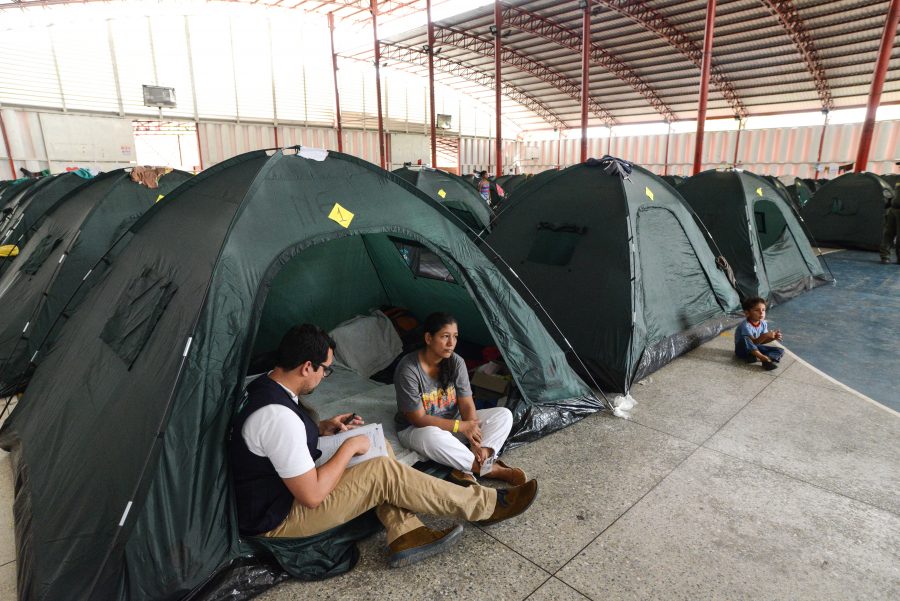
Complex Humanitarian Emergencies
CHEs involve an acute emergency layered over ongoing instability. Multiple scenarios can cause CHEs, like the civil wars in Syria and Yemen, the man-made political crisis in Venezuela, or the public health crisis in Congo.

Resilience
The Latin root of “resilience” means to bounce back, but every field has its own definition and most individuals within each discipline will define it differently. Learn more.
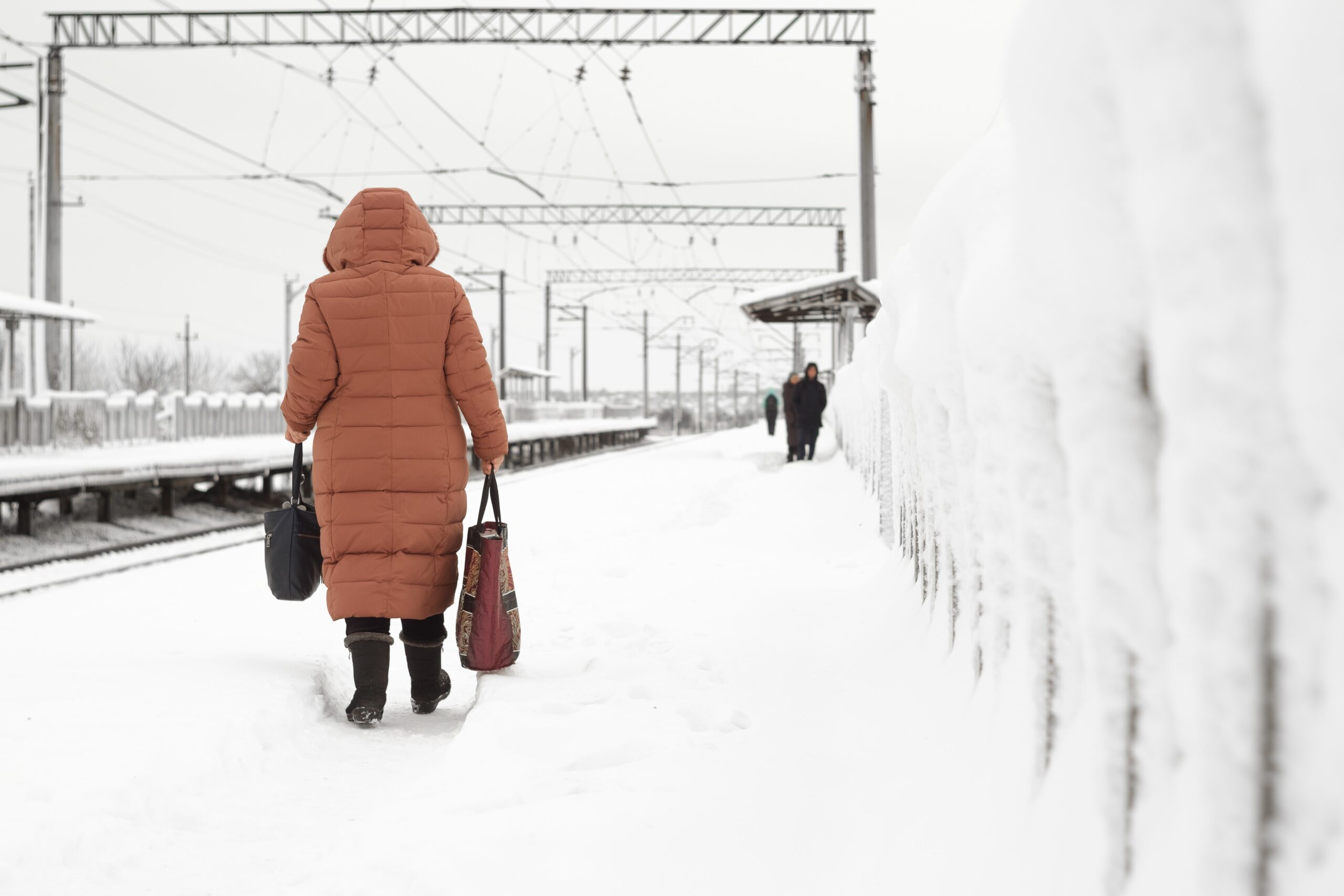
Ice, Snow and Extreme Cold
While it does not affect as many people as its opposite, extreme heat does, extreme cold can be just as deadly, especially in areas that are not accustomed to cold weather.